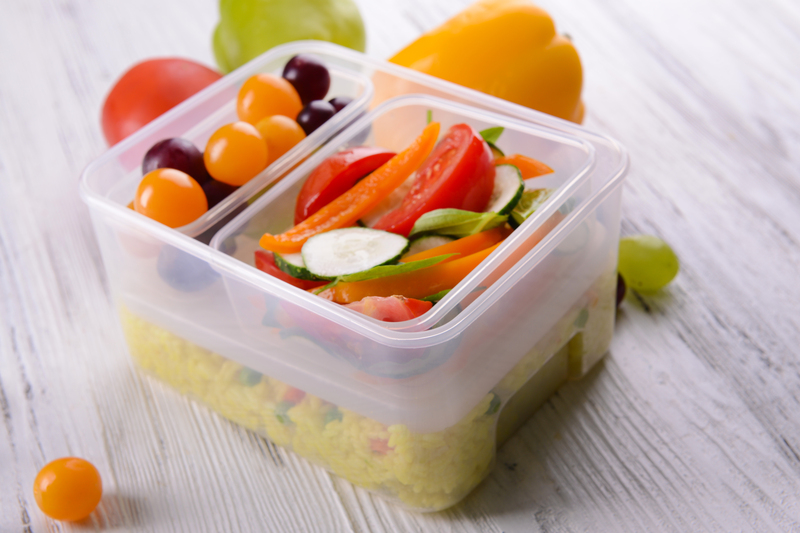Inspiring Eco-Stewardship in Kids Through Recycling Lessons
In today's ever-evolving world, fostering a sense of responsibility towards the environment is more important than ever. Inspiring eco-stewardship in kids through recycling lessons helps nurture a generation committed to sustainability. By teaching children the value of recycling, we empower them to make impactful choices for a healthier planet. In this comprehensive article, we'll explore innovative ways to instill eco-consciousness in children via recycling, provide practical lesson ideas, and discuss how early education can spark lifelong habits of environmental stewardship.
Why Is Eco-Stewardship Important in Childhood?
Eco-stewardship refers to responsibly caring for the Earth and its resources. Instilling this mindset in children is pivotal for several reasons:
- Foundation of Values: Early lessons make eco-friendly habits second nature.
- Ripple Effect: Kids often inspire families and communities to recycle and conserve.
- Future Leaders: Today's students become tomorrow's environmental advocates.
Nurturing eco-friendly values during formative years creates a deep commitment to environmental issues, including recycling and waste reduction.

Understanding Recycling: An Age-Appropriate Approach
Recycling can be an abstract concept, especially for younger children. To inspire eco-stewardship in kids, tailor your message by age:
For Young Children (Ages 3-6):
- Use picture books and simple stories to introduce the idea of "making new things from old things."
- Play sorting games with recyclable and non-recyclable items.
- Visit a local recycling center to see recycling in action.
For Elementary Schoolers (Ages 7-11):
- Teach kids how to read recycling symbols, and what materials can/cannot be recycled.
- Introduce basic science experiments, such as composting food scraps or watching how plastics break down (or don't) in soil or water.
Preteens and Teens:
- Lead school-based projects like recycling drives or waste audits.
- Discuss global waste problems, environmental justice, and how recycling helps communities worldwide.
- Encourage peer mentoring to spread eco-stewardship among classmates.
Age-appropriate recycling lessons make the topic relatable and actionable, laying the groundwork for long-term eco-friendly habits.
Creative Ways to Teach Kids About Recycling
Keeping lessons fun and engaging is crucial when inspiring eco-consciousness in youth. Here are some inventive methods for teaching recycling:
1. The Recycling Relay Race
- Set up bins labeled for plastics, paper, glass, metal, and landfill.
- Have children "race" to correctly sort household items.
- Debrief about why correct sorting matters for effective recycling.
2. Upcycle Art Projects
- Turn "trash" into treasures with art--egg carton caterpillars, plastic bottle planters, or magazine collages.
- Host a classroom exhibition to showcase their creations.
3. Recycling Storytelling and Theater
- Have students write stories or perform skits about the journey of a recyclable item.
- Use puppets or costumes to make the lesson memorable.
4. Interactive Recycling Quizzes
- Create fun quizzes using Kahoot! or Google Forms for students to test their recycling knowledge.
5. Eco-Stewardship Journals
- Encourage children to keep a journal documenting their recycling activities at home or school.
- Include reflections on how it feels to help the Earth.
Building Recycling Habits at Home
Parental involvement is a key ingredient in inspiring eco-stewardship in kids. Here's how families can reinforce recycling principles:
- Lead by Example: Let your child see you sorting recyclables properly and avoiding single-use plastics.
- Design a Kid-Friendly Recycling Station: Use color-coded bins, fun stickers, and easy-to-read labels so children can participate independently.
- Set Family Recycling Challenges: Compete to see who can recycle the most each week or reduce the most waste.
- Celebrate Achievements: Offer rewards or special recognition for consistent recycling efforts.
- Connect Recycling to Values: Discuss how recycling protects wildlife, saves energy, and keeps communities clean.
By normalizing recycling at home, parents reinforce good habits and support the lessons learned at school or in the community.
Integrating Recycling Education in Schools
Schools are powerful incubators for eco-stewardship education. Here are some strategies for embedding recycling lessons in school culture:
- Classroom Recycling Bins: Every classroom should have clearly marked bins for paper, plastics, and other recyclables.
- Green Teams: Form student clubs to lead recycling drives, monitor proper use of bins, and educate peers.
- Incorporate Recycling in Curriculum: Weave recycling themes into science, social studies, and art projects.
- Host Recycling Assemblies: Invite local environmental experts to present on recycling's impact and answer questions.
- Schoolwide Competitions: Organize recycling contests between classes or grades, fostering friendly rivalry while boosting waste diversion rates.
- Partnerships with Local Organizations: Collaborate with municipal recycling programs or eco-charities for field trips, presentations, or in-class activities.
Schools that champion recycling create an environment where sustainability becomes a core community value. This approach amplifies the impact of classroom lessons across the entire student body.
Technology and Digital Tools: Making Recycling Education Engaging
Today's children are digital natives. Leverage technology to enhance lessons and inspire recycling stewardship:
- Educational Apps: Use interactive games and apps that teach recycling symbols, sorting, and the environmental impact of waste.
- Virtual Field Trips: Many recycling centers and environmental groups offer online tours, videos, and workshops.
- Eco-Challenges: Organize digital competitions, such as tracking the amount of waste diverted from landfill via recycling or upcycling initiatives.
- Video Content: Engage students with YouTube channels, documentaries, and short films focused on recycling and eco-heroes.
Integrating digital tools helps bridge classroom knowledge and real-world action, strengthening eco-stewardship in youth.
Community Initiatives: Deepening Eco-Stewardship
Community involvement is a powerful catalyst for reinforcing environmental stewardship. Encourage participation in:
- Recycling Drives: Organize neighborhood or school recycling days to collect difficult-to-recycle materials (batteries, electronics, clothing).
- Park or Beach Clean-Ups: Involve children in removing litter, teaching them the consequences of improper waste management.
- Local Green Events: Support Earth Day fairs, composting workshops, and sustainability expos.
- Environmental Youth Groups: Sign kids up for Scouts, 4-H, or other nature-focused organizations with a recycling mission.
- Public Recognition: Nominate young environmentalists for community awards, boosting their confidence as eco-leaders.
Through these hands-on experiences, children gain a sense of ownership and pride in their contributions as eco-stewards.
Measuring the Impact: From Awareness to Action
To ensure inspiring eco-stewardship in kids through recycling lessons leads to real change, it's important to track progress:
- Pre- and Post-Lesson Surveys: Assess understanding of recycling concepts before and after lessons.
- Track Household or School Recycling Rates: Monitor the volume of recyclables collected over time.
- Student Reflections: Ask students to write about how their attitudes or behaviors have changed.
- Parent Feedback: Solicit input from families about changes in home recycling habits.
Regular assessment ensures recycling lessons have a lasting impact on both knowledge and behavior, strengthening eco-friendly habits for the future.
Overcoming Common Recycling Challenges with Kids
Instilling a passion for recycling isn't without hurdles. Here's how to address common obstacles:
1. Sorting Confusion
- Use clear, visual labels and posters to explain what goes where.
- Conduct regular sorting practice sessions.
2. Lack of Motivation
- Make recycling fun through games, art, and friendly competitions.
- Highlight the "why"--how their actions help real animals or reduce pollution.
3. Limited Access to Recycling Facilities
- Encourage creative upcycling and reuse projects, even if recycling isn't always available.
- Advocate for better recycling options in schools and communities.
4. Competing Interests and Distractions
- Integrate recycling into daily routines and connect it to kids' passions (sports, technology, art).
- Reward consistency to keep enthusiasm high.

The Lasting Benefits of Eco-Stewardship in Kids
Teaching children about recycling doesn't just benefit the environment--it shapes responsible, empathetic citizens. Some key long-term advantages include:
- Critical Thinking: Kids learn to assess environmental problems and seek solutions.
- Leadership & Teamwork: Organizing recycling projects builds cooperation and initiative.
- Global Awareness: Understanding recycling's global impact fosters empathy and big-picture thinking.
- Sustainable Lifestyle Habits: Early lessons form the blueprint for adulthood consumption patterns.
Inspiring eco-stewardship through recycling isn't just about waste--it's about empowering future changemakers.
Conclusion: Planting Seeds for a Greener Tomorrow
Inspiring eco-stewardship in kids through recycling lessons is one of the most effective ways to create a sustainable future. By blending fun, facts, and hands-on learning, we can nurture an environmental ethic that benefits communities worldwide.
Whether you're a parent, teacher, or community leader, remember: Every lesson in recycling is a step towards empowering the next generation of eco-stewards. Let's plant these seeds of stewardship today, and watch a cleaner, greener world grow tomorrow.